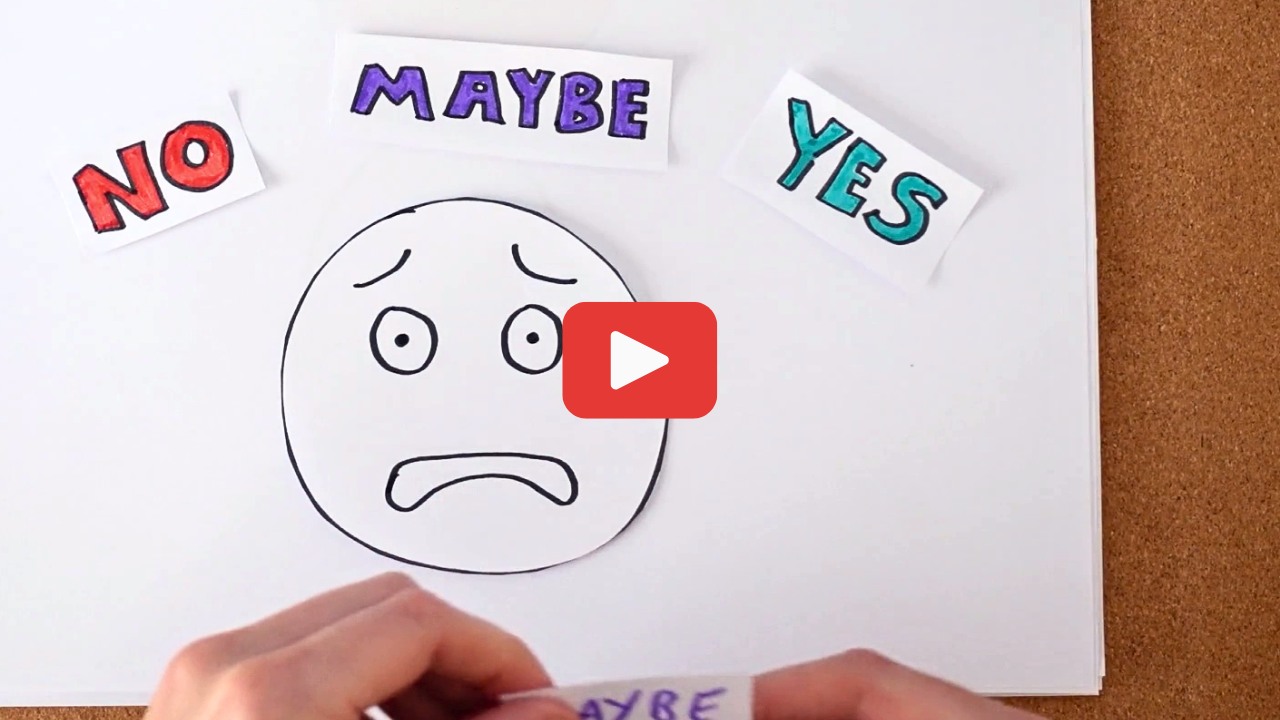
You’ve been thinking about this decision for weeks, maybe months. You tell yourself you just need more time, more information, more clarity.
You analyze over and over until you’re 100% sure that it’s the right decision. In the meantime, time ticks on and makes the decision for you.
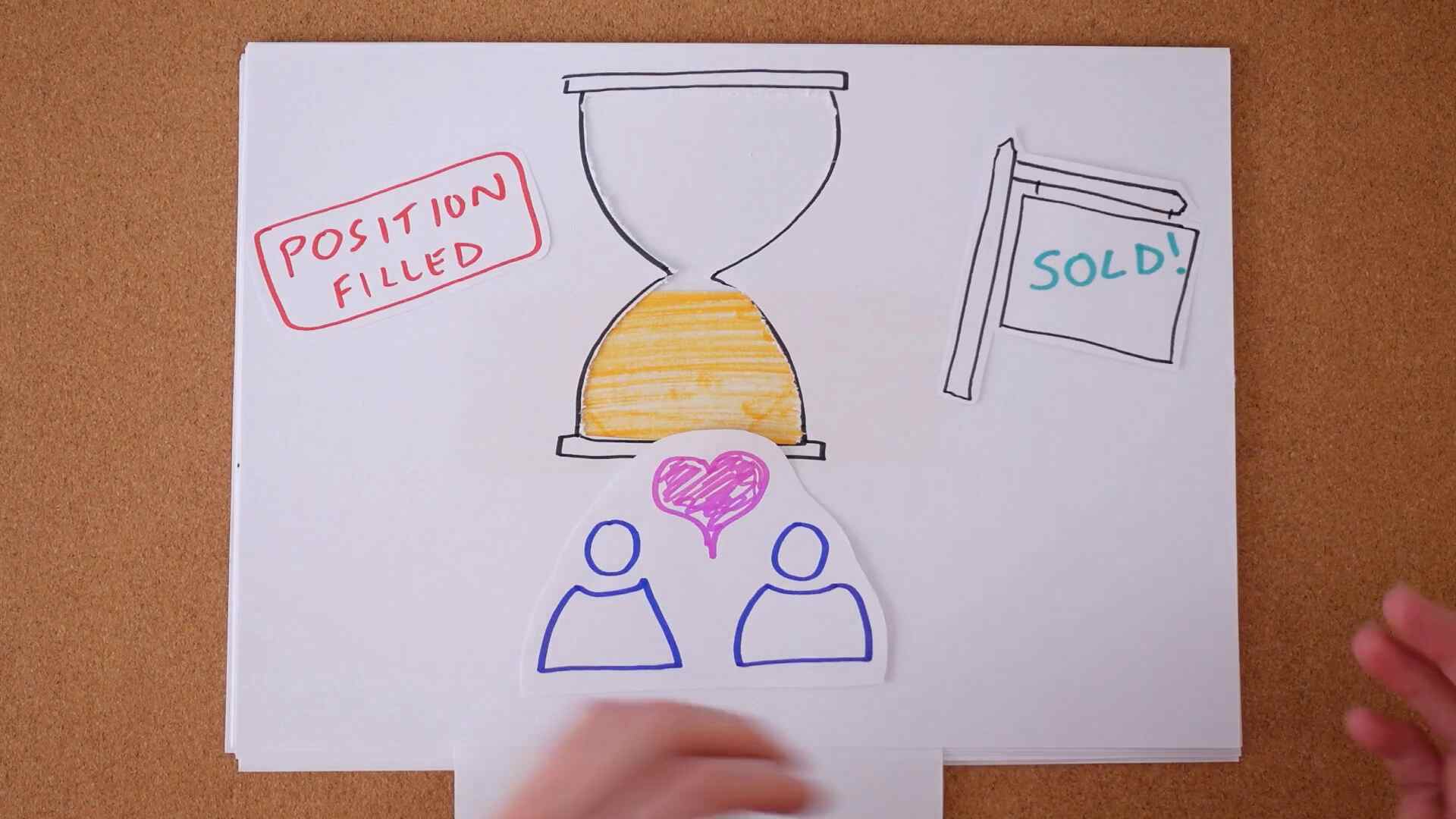
That job opening has a closing date.
The apartment you want will be sold.
The person you like won’t be single forever.
Maybe you aren’t stuck. Maybe you’re scared. I’ll show you how to spot the difference so you can finally move forward with clarity and courage.
The Approach-Avoidance Conflict
We often think that indecision means that we don’t know what we want. But a lot of the time, we do know; we just want it and fear it at the same time.
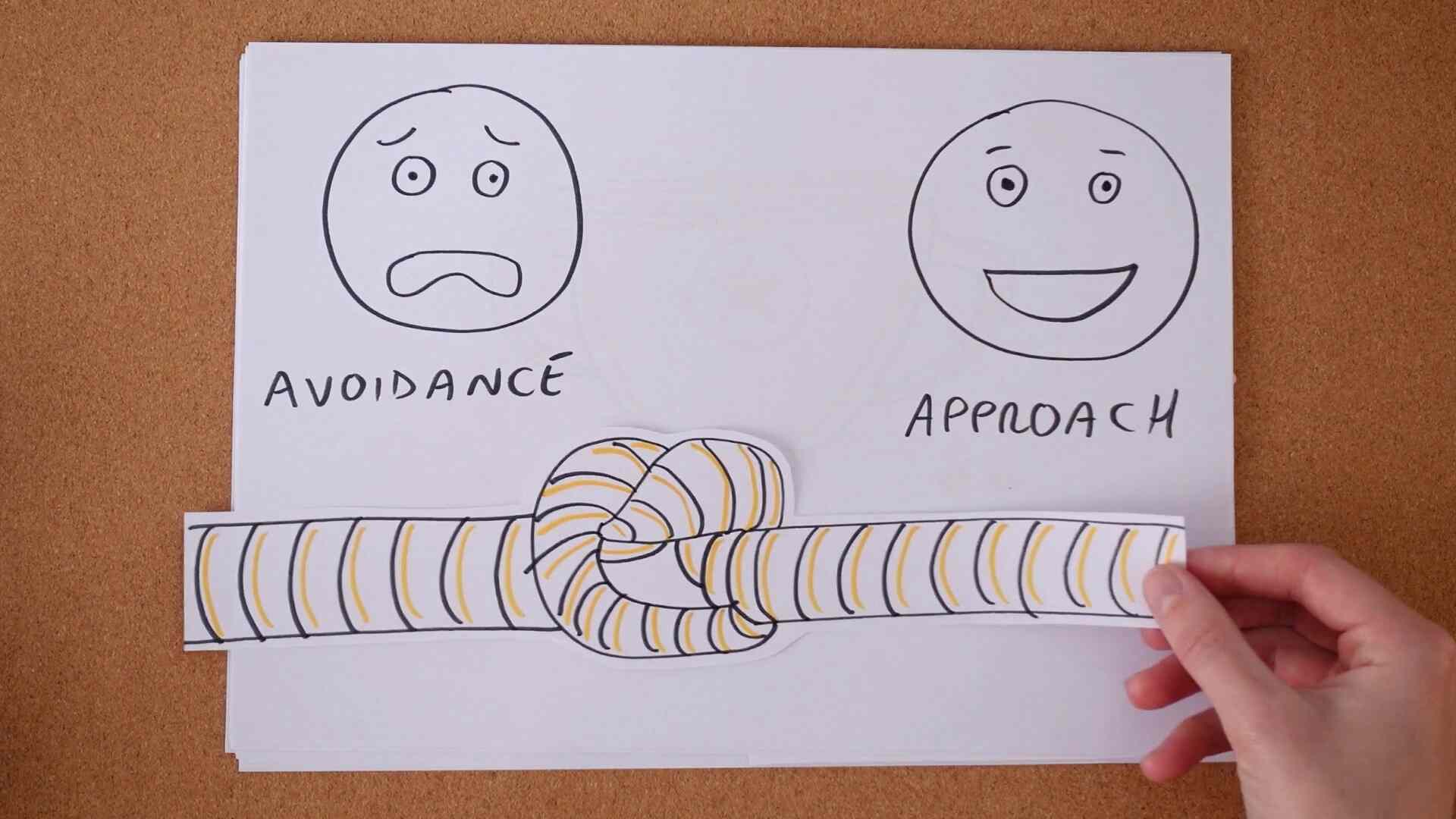
That internal tug of war is something psychologist Kurt Lewin called approach-avoidance conflict. It’s when a decision is both appealing and threatening at the same time, so you feel torn between going towards it and pulling away from it.
Let’s say you want to quit your job and start your own business.
Part of you feels really excited, motivated, and alive. But another part of you is really afraid of failing, afraid of the instability, the ambiguity, and what other people might think.
When those two forces of fear are equally strong, it creates a kind of psychological stalemate. You freeze and second-guess yourself, and you wait for the perfect time. You care so much that the stakes feel terrifying.
Loss Aversion and Its Impact
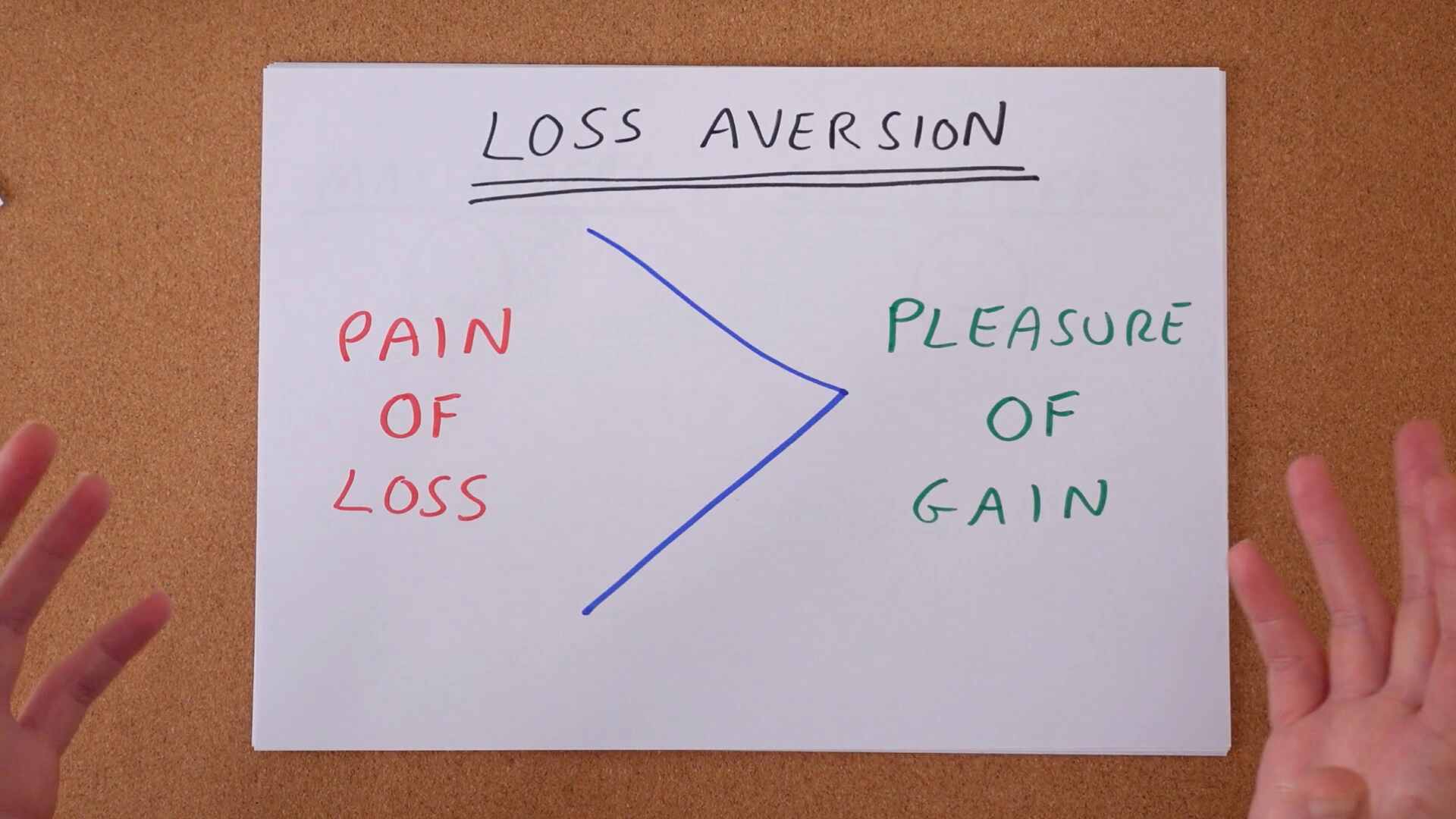
We like to think we’re driven by goals, by what we want. But biologically, we’re actually driven more by what we don’t want. Psychologists Daniel Kahneman and Amos Tversky call this loss aversion.
The pain of losing something, like money, stability, or our reputation, feels about twice as strong as the pleasure of gaining something new.
So even if a decision could bring something amazing into your life, your brain might fixate on what you could lose instead. And that fear, even if it’s subtle, can be enough to keep you stuck because it’s loud. It feels really intense and it’s designed to protect us.
This is why you might really want to leave your job but you stay another year just to be sure.
Or why you love somebody so deeply but you hold back from commitment or honesty.
Or you dream of publishing your art but you can’t bring yourself to post anything.
If you feel like that, you might be stuck in approach-avoidance conflict:
- You feel stuck in place, like you’re pressing on the gas and brake at the same time.
- You’re chronically second-guessing yourself or you’re thinking, “Yeah, I definitely want this,” and then doubting your decision and thinking, “Well, maybe I don’t.”
- Perhaps you’ve also got decision fatigue, where you’re so exhausted from thinking “Yes, no, maybe” that you just don’t know what to decide anymore.
- Or maybe you’ve got crippling anxiety because you’re thinking about what might happen when you take action.
The really tricky thing with approach-avoidance conflict is that the avoidance force gets stronger as you get closer to the decision.
The idea of starting a business is really exciting, and you think about all the success and all the freedom you’re going to have. But as you get closer to quitting your job, the negative aspects become clearer: the amount of time and effort you need to put in, the lack of financial stability.
The closer you get to actually handing in your notice, the louder this fear becomes. That’s what makes it feel like you’re on an emotional roller coaster.
Working with Approach-Avoidance Conflict
But you can work with your approach-avoidance conflict. Now that you’re aware of it, you can name it, and that can help reduce your shame and self-blame when you’re feeling these things.
Here are some steps you can take:
- List your exact fears: Get really specific. What is it that you actually fear losing? What’s at stake for you emotionally, socially, financially?
- Mentally rehearse both outcomes: What will happen if it goes well or if it goes disastrously wrong? Think about how you will handle it.
- Commit in small steps and run little experiments and micro-commitments: Try a risk-free test to explore the decision.
- Watch out for avoidance disguised as logic: If you find yourself thinking, “It’s not the right time” or “I just need one more course or book or conversation before you decide,” check whether it’s actually true. Do you have the time or knowledge to take small actions towards what you want?
I’m dealing with approach-avoidance conflict at the moment.
We’re looking at downsizing from a big, expensive house with a huge mortgage to a much smaller one. We’re excited about the stress relief, but we’re really sad that we won’t get to live in our dream house ever again.
So we’re running micro-experiments like walking to the new areas we might live in and thinking about all the different jobs we could explore.
Are we moving out of fear of not being able to earn enough money for the next 27 years to pay off the house, or are we moving because this decision is more aligned with things that actually matter to us?
Is Your Indecision Fear-Driven or Something Else?
Here’s how you can find out if your indecision is driven by fear or something else:
If it’s fear causing your indecision:
- You keep researching but never act.
- You ask other people for their opinion but you still stay undecided.
- You imagine the worst-case scenarios and say, “I need more time,” but you actually dread making the decision.
- Or you fear regret or failure of being judged if you choose the wrong thing.
If it’s actually something else affecting your indecision:
- You’ll find you’re not really clear on what it is exactly that you want.
- You feel disconnected or unmotivated by all the options available.
- You feel kind of neutral, not anxious, and you’ll say, “Okay, I’ll wait.” And that feels intentional, as though you’re in control.
- And sometimes you feel like the decision just doesn’t align with your values.
Practical Activities When Fear is Clouding Your Decision
So what do you do if you realize it is fear that’s holding you back?
The first thing is don’t push it away. Because fear isn’t your enemy. It’s trying to protect you, and its messages can be useful.
I’ve got two practical activities you can do when fear is clouding your decision.
1. Fear-Setting
Fear-setting is one of the most powerful tools I’ve ever come across for making hard decisions.
It comes from Tim Ferriss, the author of The Four Hour Work Week by Tim Ferris (Amazon affiliate link).
Ferriss argues that when you’re stuck in fear, goal-setting isn’t enough.
You have to define your fears and your goals.
Ferriss thanks this exercise for helping him avoid massive regret and take big, scary leaps that ultimately changed his life.
I did this activity to think through my fears about starting a life coaching business.
Step 1 – Define, Prevent, Repair
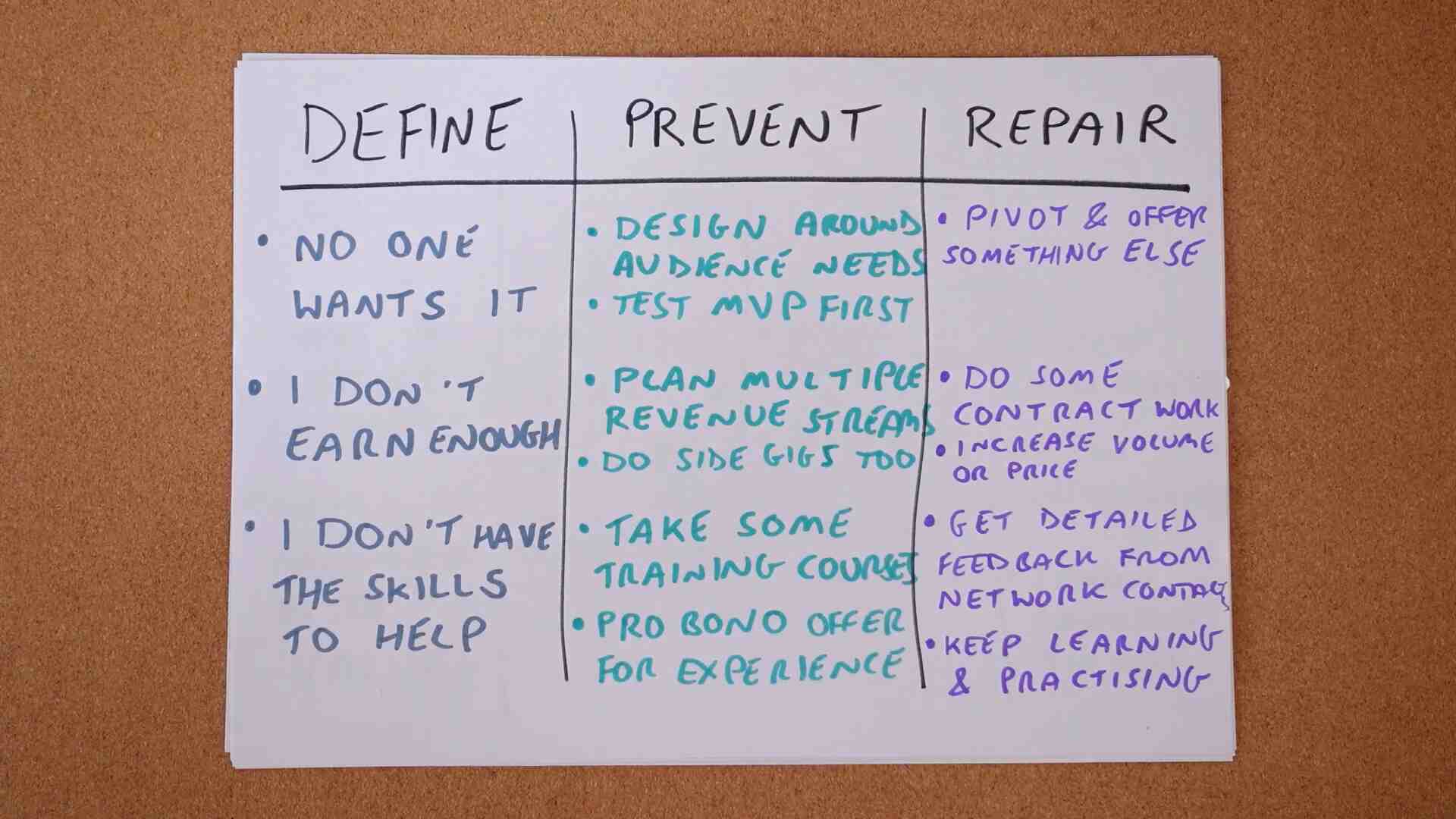
The first part of this activity is to draw three columns: Define, Prevent, and Repair.
- Define: Ask yourself, what is the worst-case scenario? What might go wrong if you do this? Write it out in vivid detail. Allow yourself to be really harsh and let the fear be honest.
- Prevent: Define how you would prevent each of these fears from happening in the first place.
- Repair: In the last section, look at if this worst-case scenario did happen, what would you do to fix it? Who could you ask for help? What steps could you take to rebuild the thing? What would you still have even if that did happen? This is huge because fear often lives in the belief that failure is final, but most of the time it’s not.
Step 2 – Likelihood score
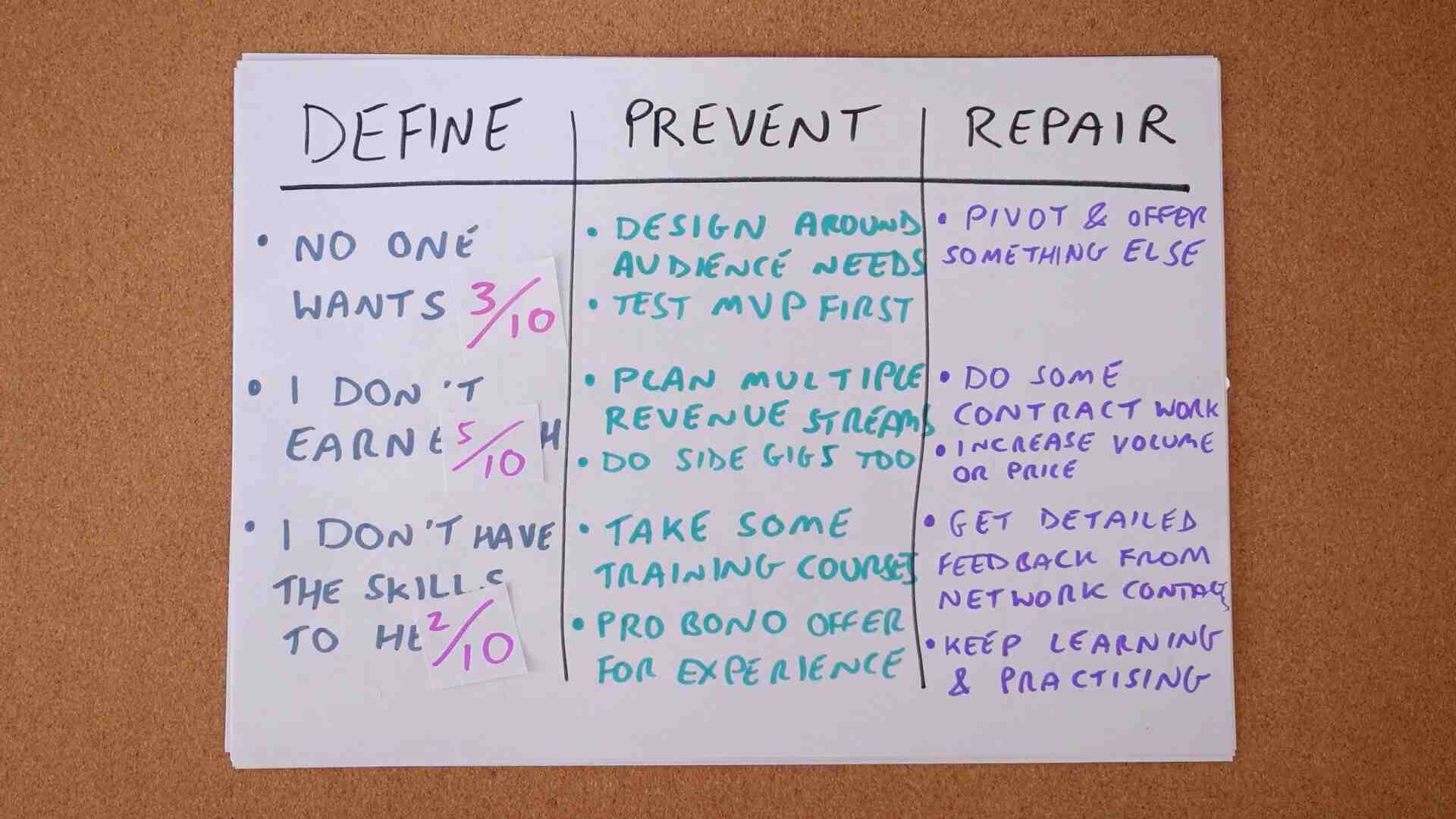
The last step is to think about how likely it is that each of these worst-case scenarios were to happen, especially if you took the steps to prevent them from happening in the first place.
You give each of these a number out of 10.
Hopefully, you’ll find that the likelihood of your fears actually becoming a reality is really quite low.
Step 3 – What could go right?
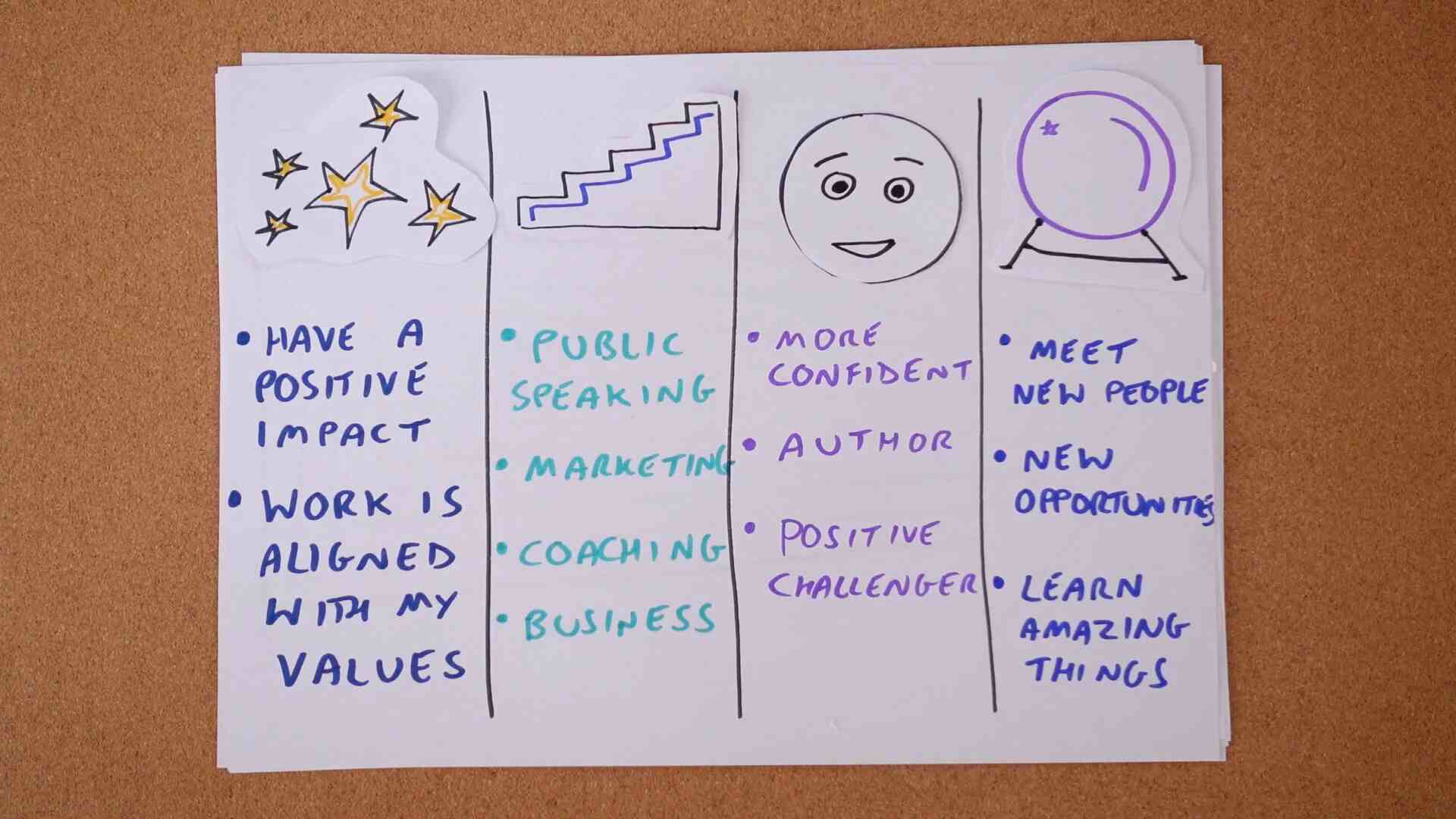
Now that you’ve imagined everything that can go wrong, it’s time to imagine what could go right.
Ask yourself, if you make this decision, what are the possible benefits, short-term and long-term? What kind of skills might you build? What kind of person could you become? And how might your life change in ways that you can’t fully predict?
Step 4 – Potential positive impact score
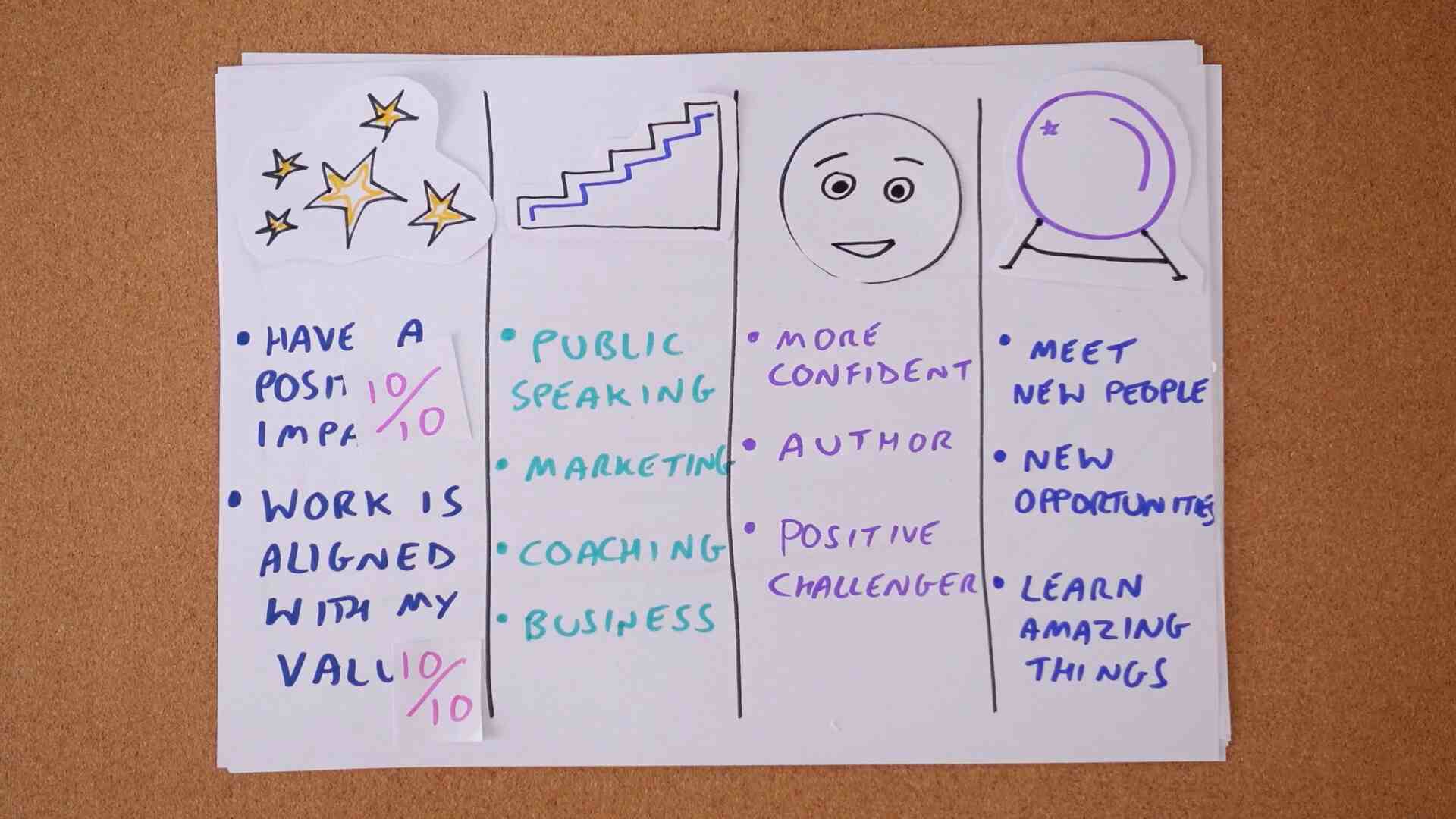
Just like you did for the things that could go wrong, give each item a score for the potential positive impact on your life.
This is a fantastic way to tackle loss aversion. Instead of focusing on everything you could lose, you’re looking at all the things that you could gain.
Step 5 – What will it cost if you do nothing?
The final part of this activity is to cover a question that most of us just skip, but it’s just as important.
We tend to think that staying where we are is safe. But indecision has a cost too, and often it’s invisible until much later.
What will it cost you if you do nothing? Ask yourself, “If I avoid this decision, what might my life look like in 6 months from now? How about in 1 year’s time? What about in 3 years?”
Will you still be stuck in the same job that drains you, hanging out with the same people who drag you down rather than light you up? Would you still be wondering what might have happened if you tried?
Inaction doesn’t prevent you from regret; it often creates it.
It’s not about rushing into something reckless and throwing all caution to the wind, but it is about recognizing that:
Avoiding fear doesn’t make it disappear. It just delays the life that you actually want.
2. Unmasking Your Identity Fears
Fear-setting is great for facing your fears about what you stand to lose, but it misses another fear that could be holding you back.
What if your real fear isn’t the decision, it’s what the decision says about you?
This is where activity 2, unmasking, comes in.
Psychologist Amy Cuddy talks about this in her book Presence (Amazon affiliate link)
She explains that when we make bold decisions – like quitting a job, walking away from a relationship, or trying something new – we’re often not just scared of the outcome. We’re scared that we’re betraying a part of who we’ve always been, a part of our identity.
Maybe you’ve always been the sensible one. Or maybe you’ve always been the one who puts other people first, or the one with the cool, flashy lifestyle. And now this decision you’re faced with threatens this identity.
Fear isn’t only about losing what’s ahead; it’s about losing your grip on who you think you’re supposed to be.
But your identity isn’t static. Cuddy’s research shows that when we act in alignment with our true values, even if that means changing paths, we feel more like ourselves, not less. I really like this quote from her:
“Don’t fake it till you make it. Fake it till you become it.”
Amy Cuddy
Sometimes becoming the new version of yourself means letting go of outdated versions of who you were, even if they once served you really well.
It’s not an easy thing to do. Change is hard, and the more your identity is tied to this decision, the harder it will be.
When I left my corporate job to start a tabletop gaming website, I’d never run an online business. I had no reputation in the gaming space, and I only had savings to last me 18 months.
I knew my old job inside out. I’d been a lead designer on award-winning programs and I earned a decent salary. To walk away and leave my old corporate identity behind was very hard, and leaving the paycheck was scary. But I knew I needed to do it to build something of my own and live in alignment of my own core value of freedom.
To build up my confidence, I devoured stories of successful bloggers and content creators. I joined a course with an online community full of people who had already succeeded.
Without realizing it, I was tapping into a powerful psychological concept called social modeling.
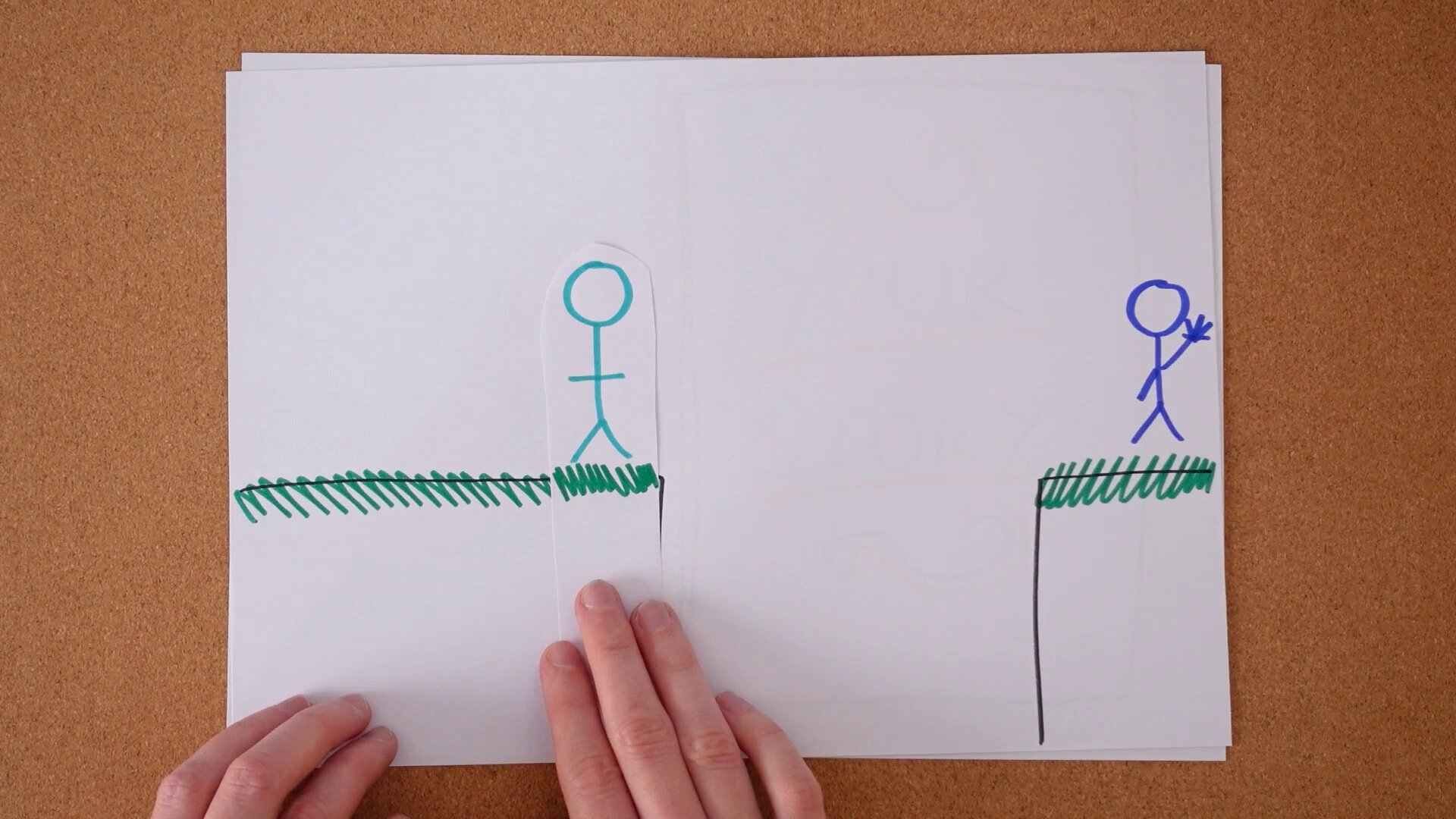
When we watch someone else take a risk, face a fear, or make a big leap, our brain mirrors the behavior. It starts to believe,
“If they can do it, maybe I can too.”
Bandura found that by seeing others succeed, particularly when they struggle at first or share their fears, increases our belief in our own ability. Seeing somebody else rewrite their story makes it feel safer for you to rewrite yours.
Your story
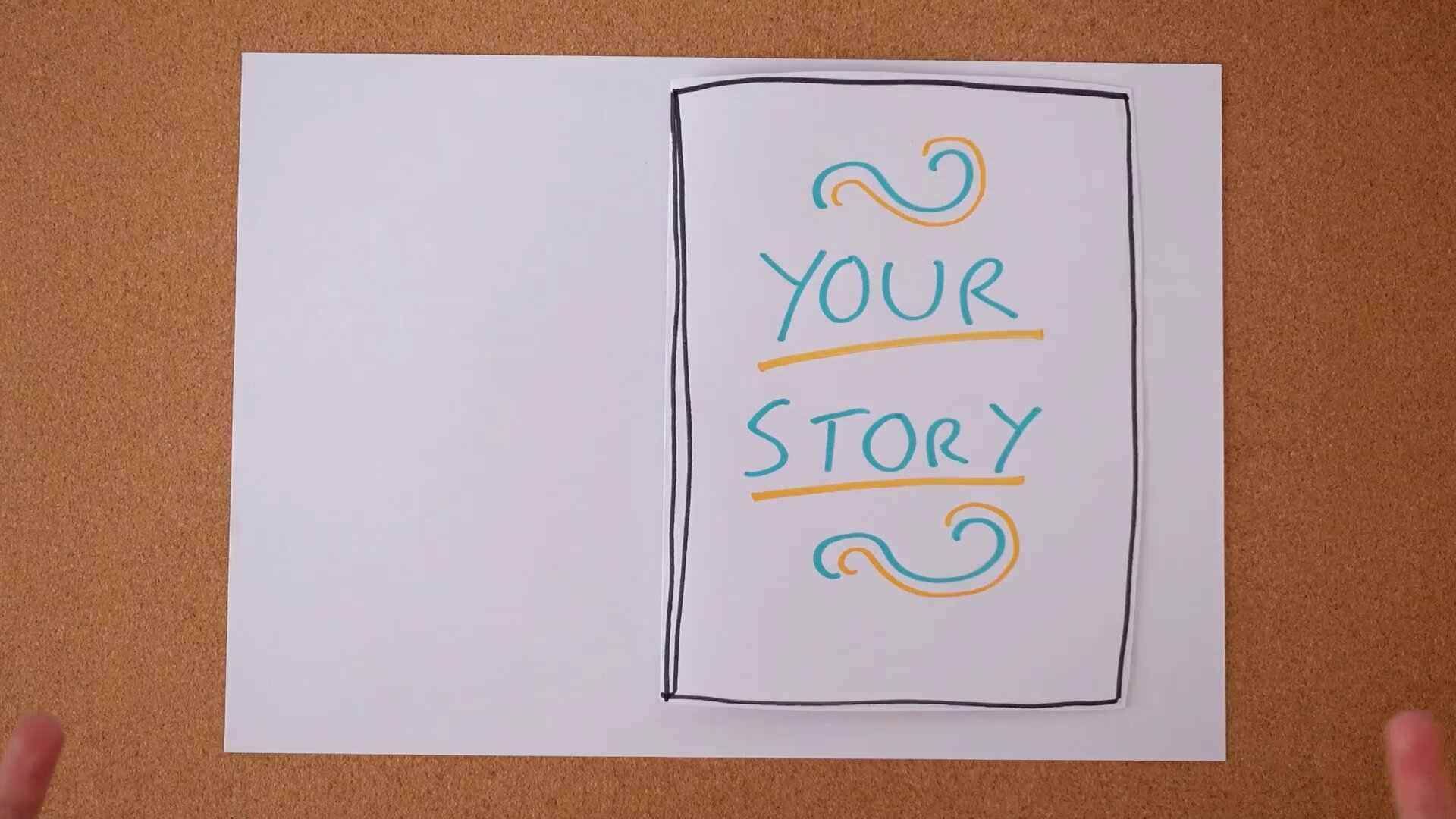
So go and find stories of people who have the same identity as you but they changed.
Maybe they left a stable job after years of being a dependable one. Maybe they gave up their flashy lifestyle and status symbols to live in a camper van and travel the world. Maybe they chose art or music instead of a lifetime of being the overachiever that’s always striving for more.
When you start seeing these stories, you can’t unsee them. And it makes you wonder what if a better life is waiting for you too?
If you keep thinking about a big life decision over and over – should I stay or go, which path should I choose, what if I regret it – then there are three science-backed techniques you can use to finally get clarity here.
Books
📖 The Four Hour Work Week by Tim Ferris (Amazon affiliate link)
📖 Presence by Amy Cuddy (Amazon affiliate link)
References
Kahneman, D., & Tversky, A. (1979). Prospect theory: An analysis of decision under risk. Econometrica, 47(2), 263–291.
O’Neil, EB; Newsome, RN; Li, IH; Thavabalasingam, S; Ito, R; Lee, AC (11 November 2015). “Examining the Role of the Human Hippocampus in Approach-Avoidance Decision Making Using a Novel Conflict Paradigm and Multivariate Functional Magnetic Resonance Imaging”. The Journal of Neuroscience. 35 (45): 15039–49. doi:10.1523/JNEUROSCI.1915-15.2015. PMC 6605357. PMID 26558775.
Bandura, A. (1969). Social-learning theory of identificatory processes. In D.A. Goslin (Ed.), Handbook of Socialization Theory and Research (pp. 213–262). Chicago: Rand McNally.